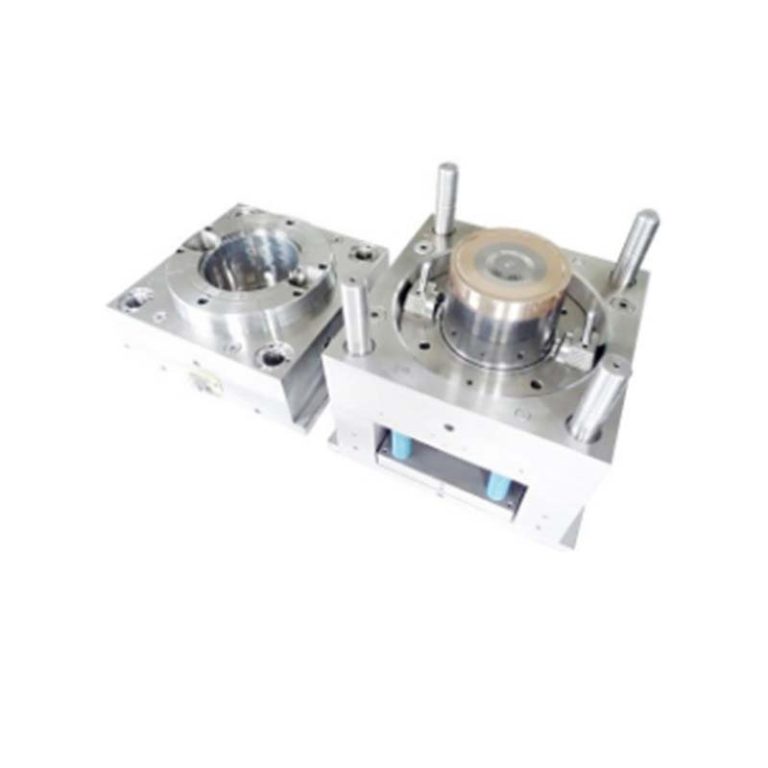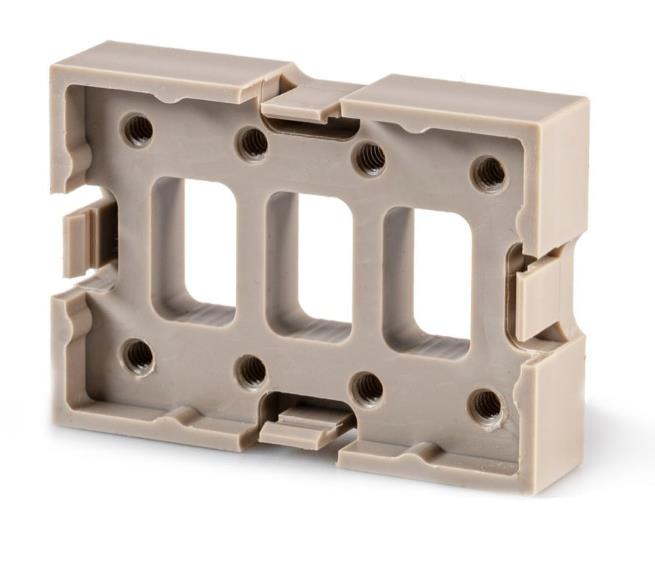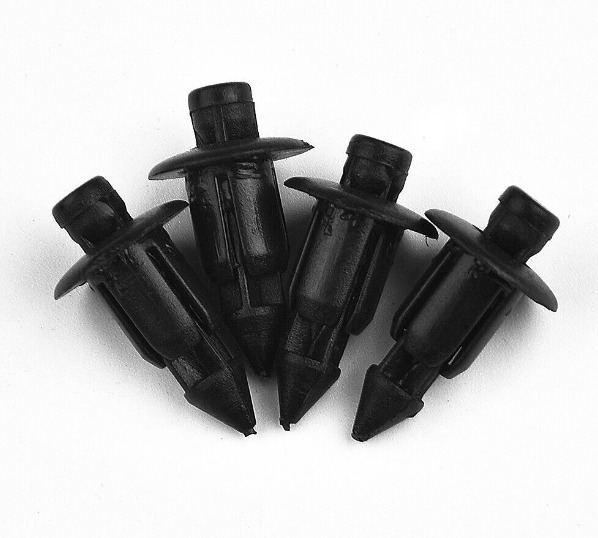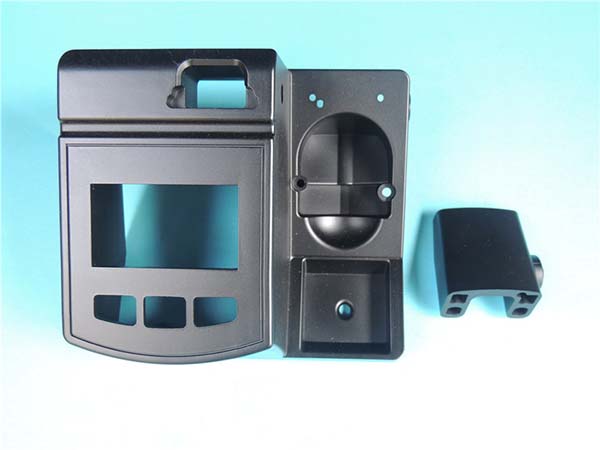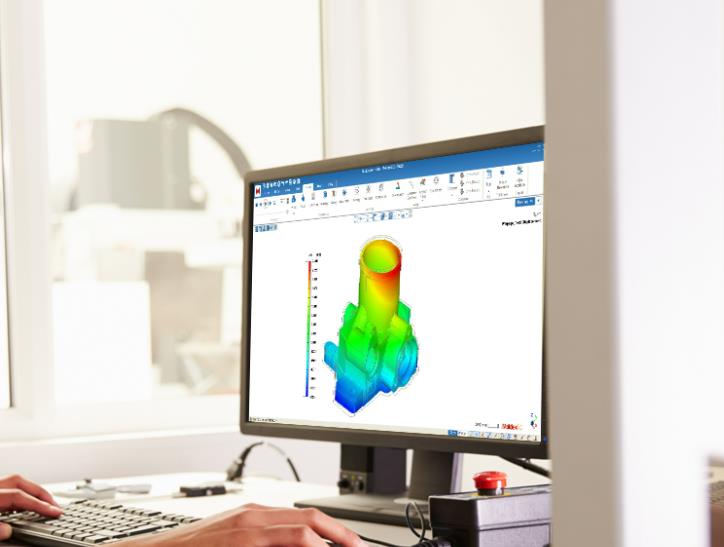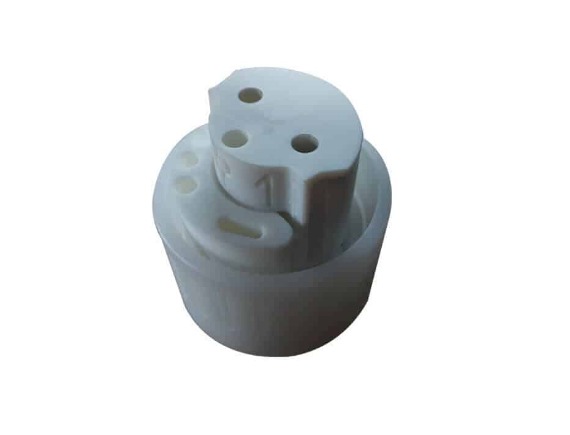What is Thermoplastic Injection Molding
Thermoplastic injection molding is a widely used manufacturing process in the plastics industry. It involves heating thermoplastic materials until they reach a molten state and then injecting this melted plastic into a precisely designed mold cavity under high pressure. Once the mold is filled, the plastic cools and solidifies, taking on the exact shape of the mold. After solidification, the mold opens, and the newly formed plastic part, or "molded part," is ejected. This process is highly versatile and efficient, allowing for the mass production of complex - shaped plastic components with high precision.
This manufacturing method is employed across a vast range of industries. In the automotive industry, it is used to create interior components like dashboards, door panels, and various trim parts. For example, the soft - touch surfaces of modern car dashboards are often made through thermoplastic injection molding, providing both aesthetic appeal and functionality. In the consumer electronics sector, it plays a crucial role in manufacturing casings for smartphones, tablets, and laptops. These casings need to be not only lightweight but also strong enough to protect the delicate internal components, and thermoplastic injection molding can meet these requirements. Additionally, in the medical field, it is used to produce items such as syringes, IV connectors, and prosthetic components, where high - precision and biocompatibility are essential.
The applications of thermoplastic injection molding are virtually limitless, from small, intricate parts like gears in watches to large - scale components such as plastic storage bins. Its ability to produce high - quality parts in large quantities with relatively low cost per unit makes it a preferred choice for many manufacturers around the world.
The Process in Detail
Step - by - Step Breakdown
- Plastic Material Preparation: The process begins with the selection of the appropriate thermoplastic resin. Common thermoplastics used in injection molding include polyethylene (PE), polypropylene (PP), polystyrene (PS), and acrylonitrile - butadiene - styrene (ABS). These resins are typically in pellet form. Before processing, the pellets may need to be dried to remove any moisture. High - moisture content can cause defects in the final product, such as bubbles or surface imperfections. For example, in the production of high - quality plastic lenses, even a small amount of moisture in the raw material can lead to optical distortion in the lenses.
- Heating and Melting: The dried plastic pellets are fed into the hopper of an injection molding machine. From the hopper, they enter the barrel, where they are heated by external heating elements and the internal friction generated by the rotating screw. The barrel is usually divided into multiple heating zones, each with a different temperature setting. For instance, the temperature at the rear of the barrel, near the hopper, is typically lower (around 150 - 180°C for many common plastics), gradually increasing towards the front (up to 200 - 250°C) to ensure complete melting and uniform plasticization of the material.
- Injection: Once the plastic is fully melted and plasticized, the screw moves forward, injecting the molten plastic into the closed mold cavity at high pressure. The injection pressure can range from 50 - 200 MPa, depending on the complexity of the mold, the type of plastic, and the size of the part. For small, simple parts made of low - viscosity plastics like PE, a relatively lower injection pressure of around 50 - 80 MPa may be sufficient. In contrast, for large, complex parts with thin walls or detailed features, such as some automotive interior components, a much higher pressure of 150 - 200 MPa might be required to ensure complete filling of the mold cavity.
- Cooling and Solidification: After the mold cavity is filled, the plastic is allowed to cool and solidify. The cooling process is crucial as it determines the final shape, dimensional accuracy, and mechanical properties of the part. Cooling is typically achieved by circulating a coolant (usually water) through channels within the mold. The cooling time can vary widely, from a few seconds for small, thin - walled parts to several minutes for large, thick - walled components. For example, a small plastic toy part might cool and solidify in just 5 - 10 seconds, while a large, thick - walled plastic storage bin could take 3 - 5 minutes to cool properly.
- Mold Opening and Part Ejection: Once the plastic has solidified, the mold opens, and the finished part is ejected from the mold. This is usually accomplished using ejector pins or a similar mechanism that push the part out of the mold cavity. The ejector pins must be carefully designed and placed to ensure that they do not damage the part during ejection. For parts with complex geometries or undercuts, additional mechanisms like side - action cores or lifters may be required to facilitate the removal of the part from the mold.
- Post - processing: After ejection, the part may undergo post - processing operations. This can include trimming excess plastic (such as flash or runner systems), deburring, sanding, painting, or assembly with other components. For example, a plastic smartphone case may be painted to provide a decorative finish and additional protection, while a multi - part plastic assembly might require precise alignment and fastening of individual components.
Key Equipment and Their Roles
- Screw: The screw is a central component in the injection molding machine. Its main functions are to convey the plastic pellets from the hopper into the barrel, compress and melt the plastic through rotation, and then inject the molten plastic into the mold. The design of the screw, including its pitch, flight depth, and compression ratio, greatly affects the plasticizing and injection process. For example, a screw with a high compression ratio is more suitable for processing plastics with high viscosity, as it can generate more shear heat to melt the plastic more effectively.
- Barrel: The barrel houses the plastic during the heating and melting process. It provides a controlled environment for the plastic to reach the desired molten state. The barrel's heating zones, as mentioned earlier, are carefully calibrated to ensure that the plastic is uniformly heated and plasticized. Additionally, the inner surface of the barrel must be smooth and wear - resistant to prevent plastic adhesion and ensure smooth plastic flow.
- Heating Coils: Heating coils are wrapped around the barrel to provide the necessary heat for melting the plastic. They are typically made of materials with high electrical resistance, such as nichrome wire. When an electric current passes through the coils, they generate heat, which is transferred to the barrel and then to the plastic. The temperature of the heating coils is precisely controlled by a temperature control system to maintain the desired temperature profile along the barrel.
- Nozzle: The nozzle is the passage through which the molten plastic exits the barrel and enters the mold. It must be designed to ensure smooth and accurate transfer of the molten plastic. Nozzles can be of different types, such as open - tip nozzles for general applications or needle - type nozzles for more precise control of the plastic flow, especially in applications where preventing drooling or back - flow of the molten plastic is crucial, like in the production of high - precision medical components.
Materials Used in Thermoplastic Injection Molding
Common Thermoplastic Materials
- ABS (Acrylonitrile - Butadiene - Styrene): ABS is a popular thermoplastic known for its excellent impact resistance, strength, and rigidity. It has a density of around 1.05 g/cm³. This material can withstand a wide range of temperatures, typically from -40°C to 100°C. ABS is widely used in the automotive industry for interior components like dashboards and door panels due to its good aesthetics and durability. In the electronics field, it is used for manufacturing the casings of gaming consoles, as it can protect the internal components from impacts and provide a sleek appearance. It also has good chemical resistance, making it suitable for applications where it may come into contact with various substances.
- PP (Polypropylene): PP is a lightweight thermoplastic with a density of 0.9 - 0.91 g/cm³, which is one of the lightest plastics. It has a relatively high melting point, usually around 160 - 170°C, and can be used at temperatures up to 100°C continuously. PP is highly resistant to chemicals, such as acids and alkalis, making it a great choice for applications in the chemical and pharmaceutical industries, like making chemical storage containers and medicine bottles. In the food packaging industry, it is used for items like food containers and bottle caps because it is non - toxic and has good moisture resistance, helping to keep food fresh. It also has good fatigue resistance, which is why it is used in products with moving parts, such as hinges.
- PE (Polyethylene): There are different types of PE, including high - density polyethylene (HDPE), low - density polyethylene (LDPE), and linear low - density polyethylene (LLDPE). HDPE has a density of 0.93 - 0.97 g/cm³, LDPE has a density of 0.910 - 0.940 g/cm³. HDPE is known for its high strength, stiffness, and excellent chemical resistance. LDPE is more flexible and has better impact resistance at low temperatures. HDPE is often used for making plastic pipes for water and gas supply due to its durability and chemical stability. LDPE is commonly used in the production of plastic bags, films, and flexible packaging materials because of its flexibility and transparency. In the automotive industry, PE is used for components like fuel tanks and bumpers, taking advantage of its lightweight and impact - resistant properties.
- PS (Polystyrene): PS is a transparent thermoplastic with a density of about 1.05 g/cm³. It has good optical properties, with a light transmittance of over 90%, which makes it suitable for applications where transparency is crucial, such as in the production of disposable cups, cutlery, and clear plastic packaging. It also has excellent electrical insulation properties, so it is used in the electronics industry for components like insulation parts. However, PS is relatively brittle and has low heat resistance, typically only able to withstand temperatures up to around 70 - 90°C.
Material Selection Considerations
- Product Performance Requirements:
- Mechanical Properties: If the final product needs to withstand high mechanical stress, materials with high tensile strength, such as ABS or some high - performance engineering plastics, should be considered. For example, in the production of power tool housings, which need to endure impacts during use, ABS is a suitable choice.
- Chemical Resistance: When the product will be exposed to chemicals, like in chemical processing equipment or storage containers, materials like PP or HDPE, which have good chemical resistance, are preferred.
- Temperature Resistance: For applications in high - temperature environments, such as in automotive engines or industrial ovens, materials with high melting points and good heat resistance, like some specialized grades of PP or engineering plastics, should be selected.
- Cost: Cost is a significant factor in material selection. Commodity plastics like PE, PP, and PS are generally more cost - effective and are suitable for large - scale production of consumer goods, such as toys, household items, and packaging materials. On the other hand, engineering plastics, although they offer superior performance, are often more expensive and are used when performance requirements cannot be met by cheaper materials, like in high - end electronics or aerospace applications.
- Processing Performance:
- Melt Flow Index (MFI): This indicates how easily a thermoplastic can flow when melted. Materials with a high MFI, such as LDPE, are easier to process in injection molding as they can quickly fill the mold cavity. However, materials with very high MFI may have lower mechanical properties.
- Shrinkage Rate: Different materials have different shrinkage rates during cooling and solidification. For products with high - dimensional accuracy requirements, materials with low and consistent shrinkage rates should be chosen. For example, ABS has a relatively lower and more stable shrinkage rate compared to some other plastics, making it suitable for products where precise dimensions are crucial.
Yigu Technology's Perspective
As a non - standard plastic metal products custom Supplier, Yigu Technology has in - depth insights into thermoplastic injection molding. With years of experience in the industry, we have witnessed the remarkable evolution and widespread application of this manufacturing process.
Our state - of - the - art equipment allows us to handle a diverse range of thermoplastic materials with precision. Whether it's processing high - performance engineering plastics or common commodity plastics, we ensure that the material preparation, heating, injection, cooling, and post - processing steps are executed flawlessly.
Our team of highly skilled engineers and technicians is well - versed in the nuances of thermoplastic injection molding. They can optimize the process parameters according to different product requirements, ensuring high - quality and consistent product output. For example, when dealing with complex - shaped parts, our experts can design molds and adjust injection pressures to achieve perfect filling of the mold cavity and minimize defects. We are committed to providing our customers with customized solutions, leveraging our expertise in thermoplastic injection molding to meet their unique product needs, from concept design to mass production.
FAQ
What is the difference between thermoplastic injection molding and other molding methods?
Thermoplastic injection molding differs from other methods in several ways. Compared to compression molding, which involves placing pre - heated material in an open mold and then applying pressure to shape and cure it, injection molding injects molten plastic into a closed mold at high pressure. Compression molding is often used for larger, simpler - shaped parts and is more suitable for thermosetting plastics, while injection molding is better for complex - shaped parts and is mainly used for thermoplastics. For example, large plastic storage tanks may be made by compression molding, while small, intricate plastic gears are typically produced by injection molding.
When compared to blow molding, injection molding creates solid parts, while blow molding is used to produce hollow objects like plastic bottles. In blow molding, a heated plastic tube (parison) is placed in a mold, and air pressure is used to expand the parison to fill the mold cavity. Injection molding, on the other hand, directly injects molten plastic into the mold cavity without the need for a pre - formed tube and air - inflation step.
